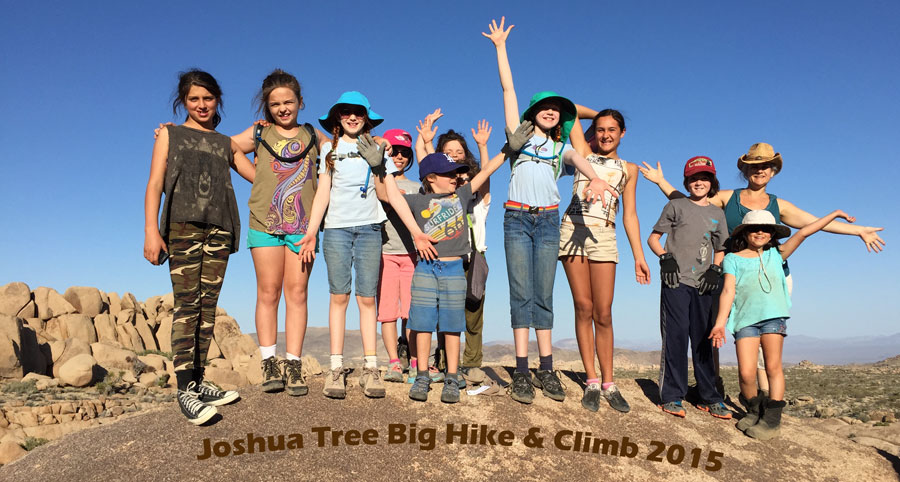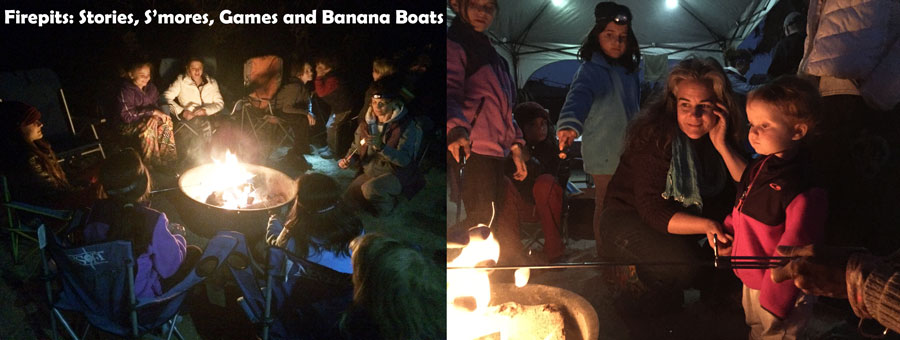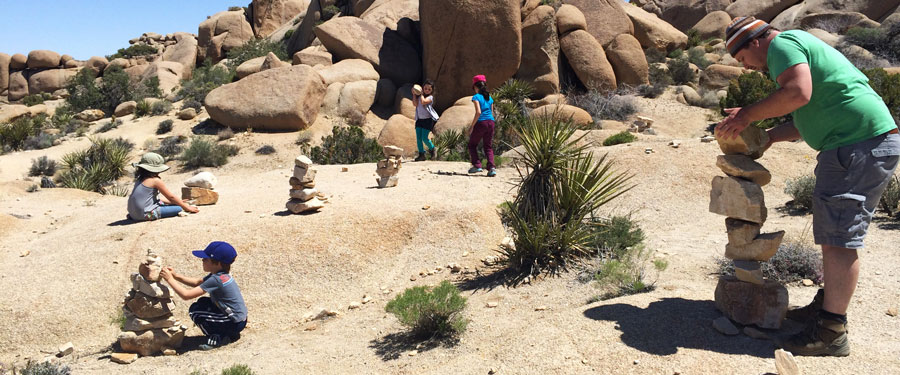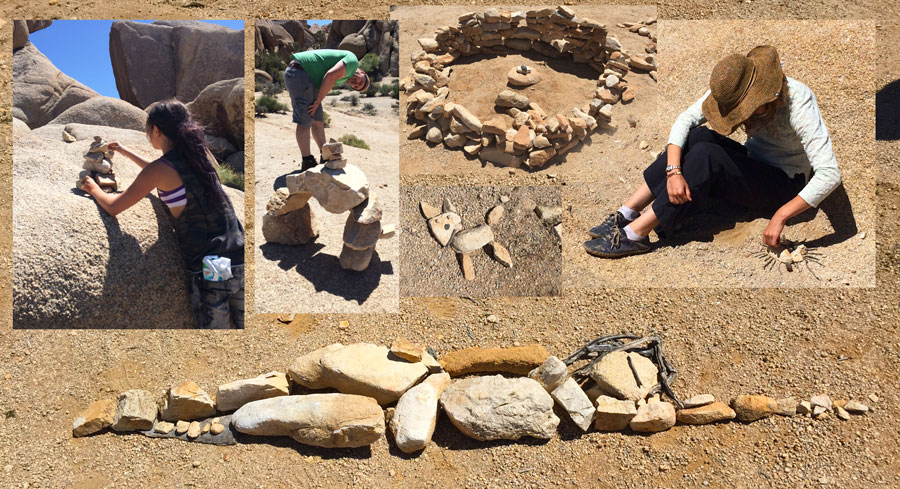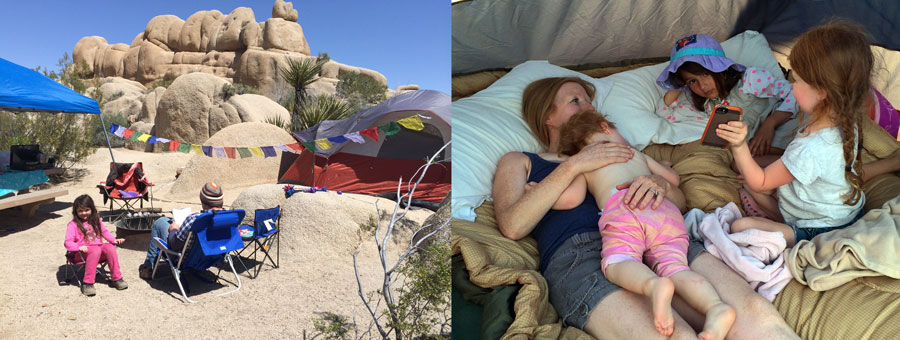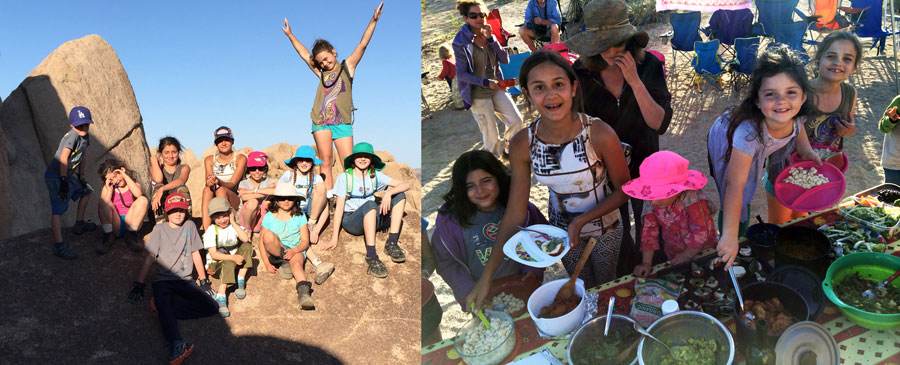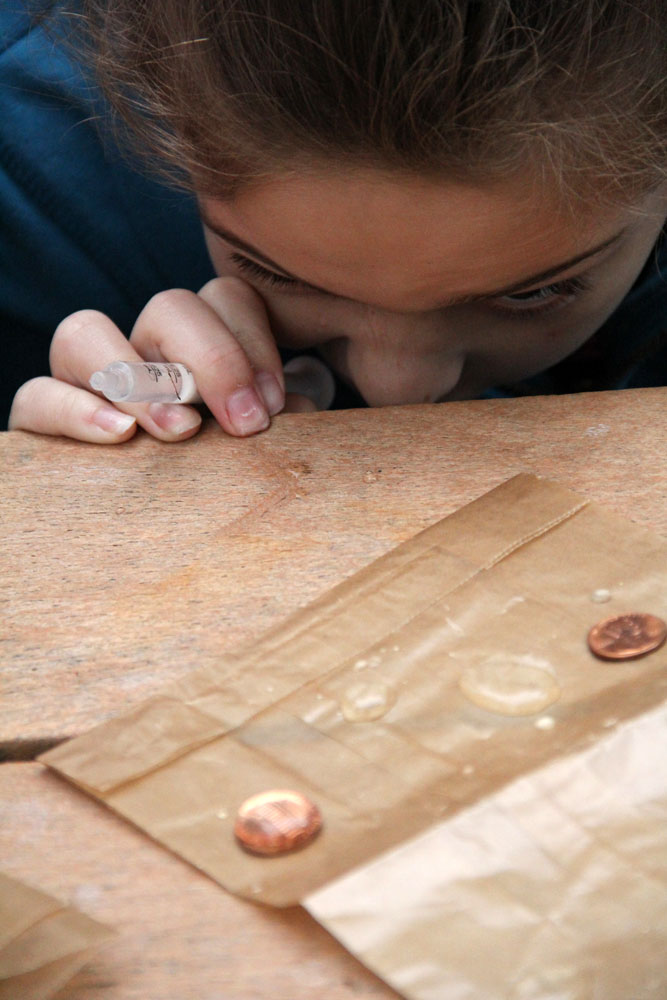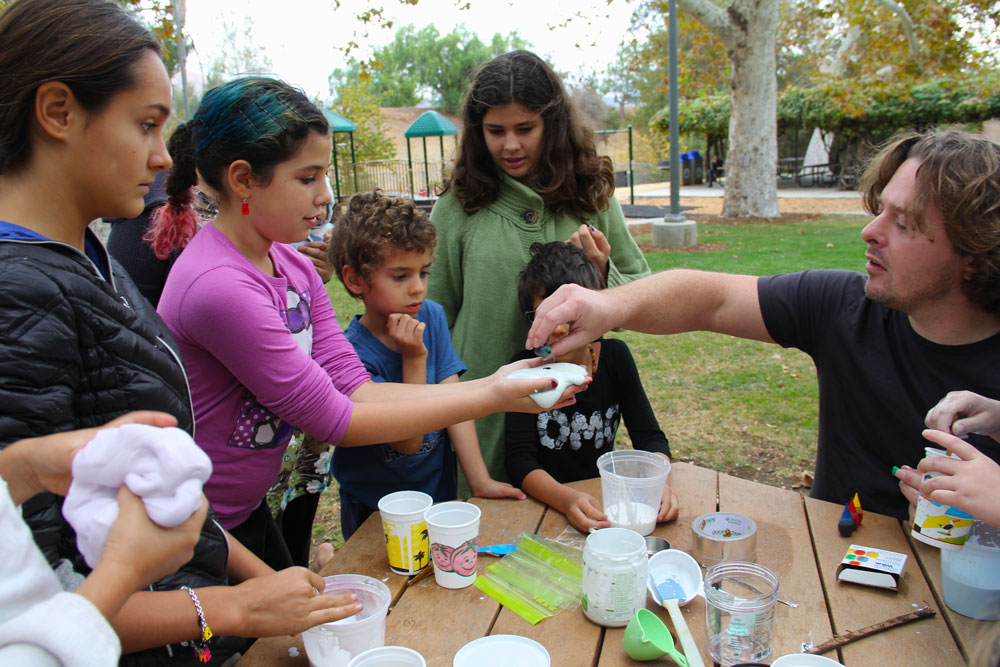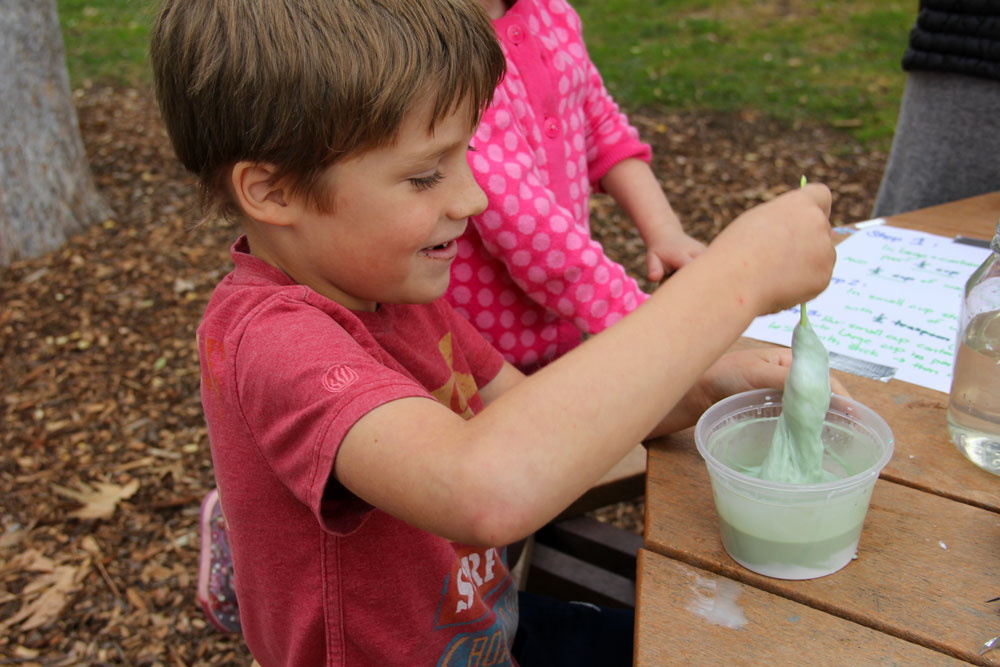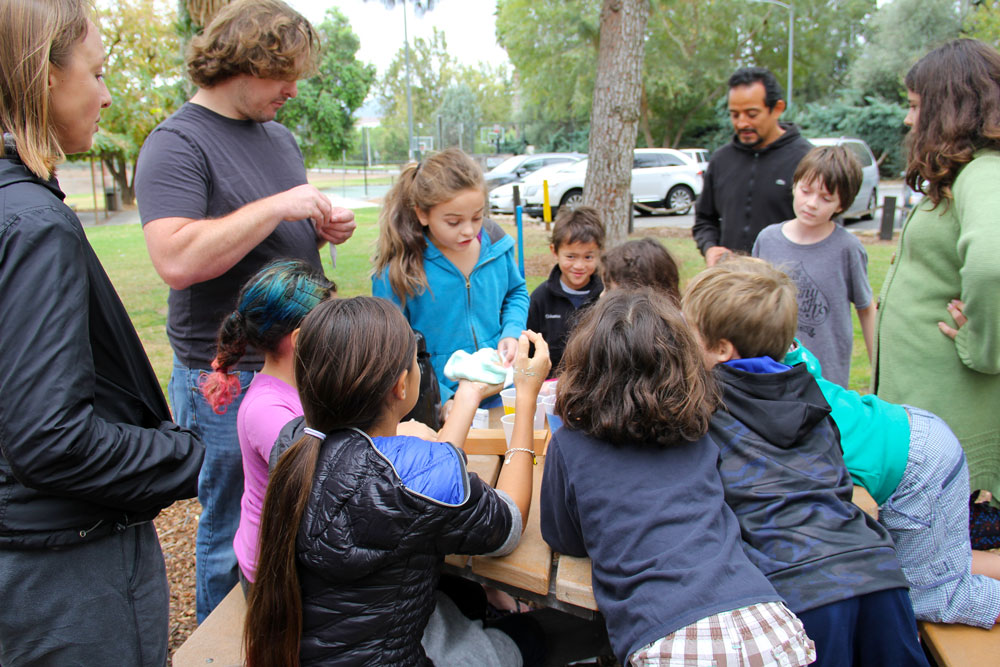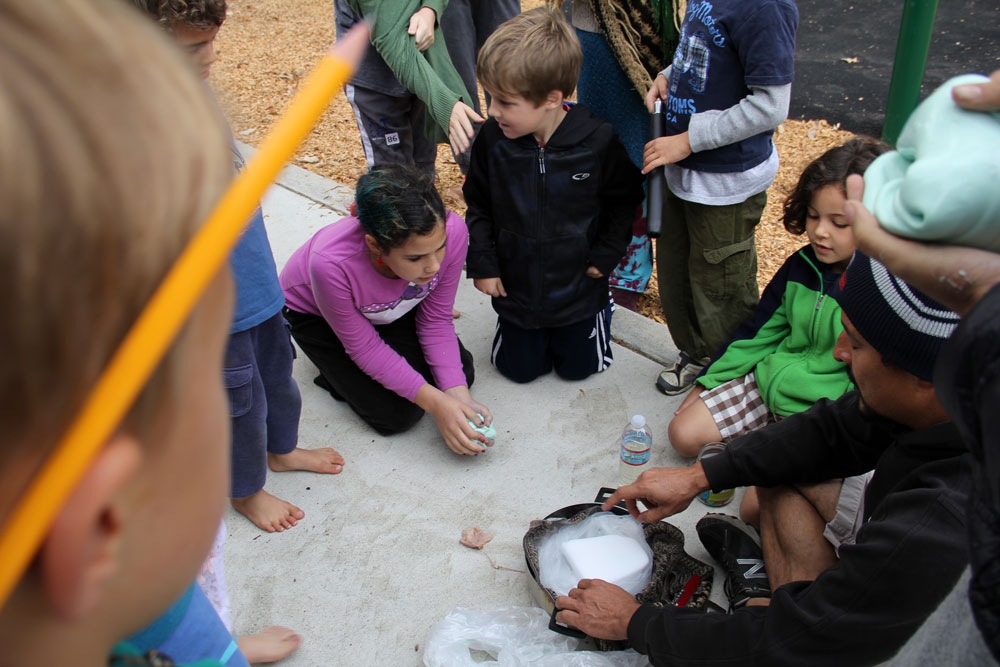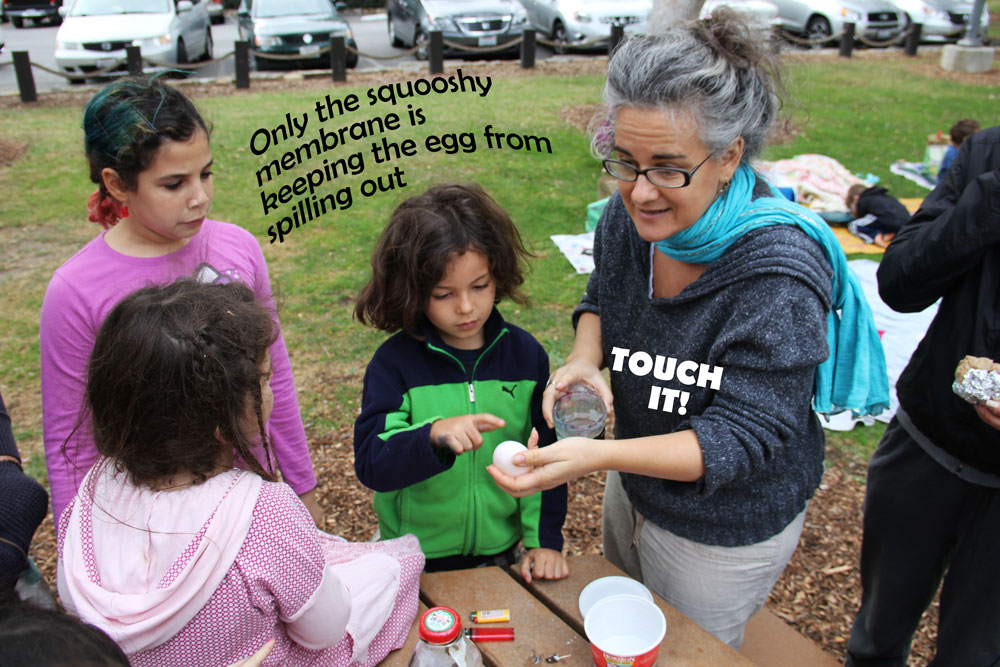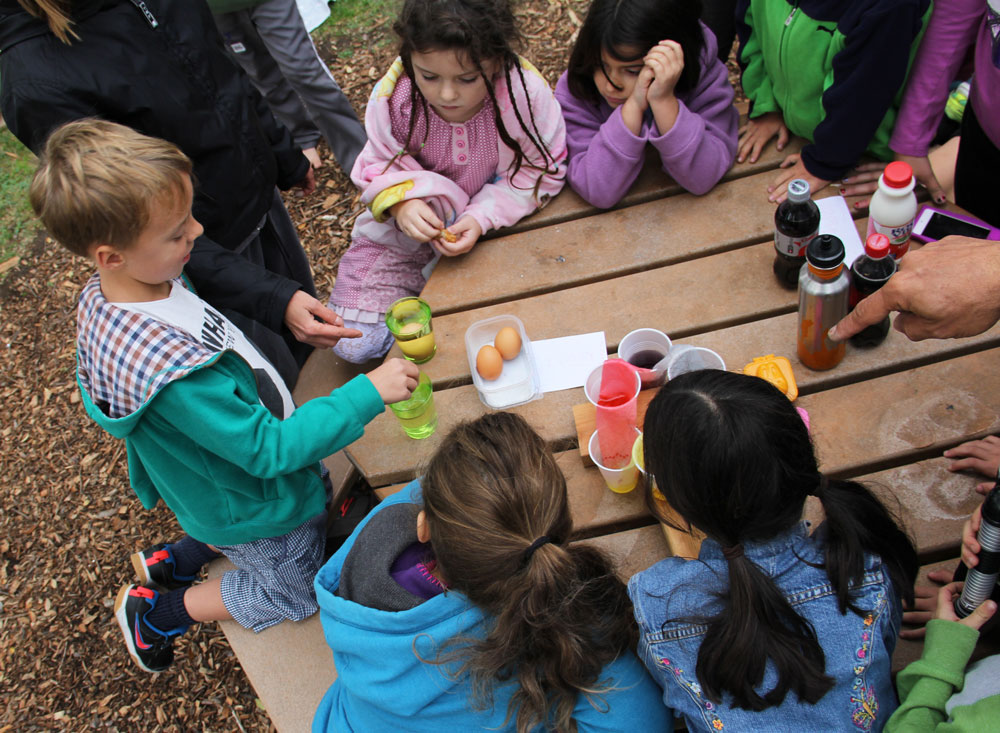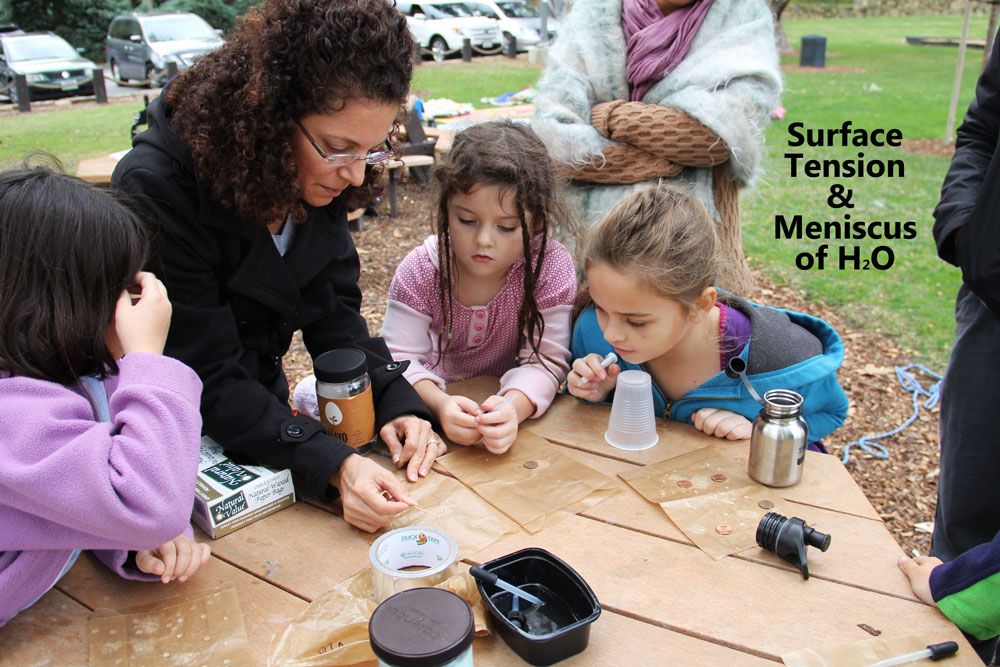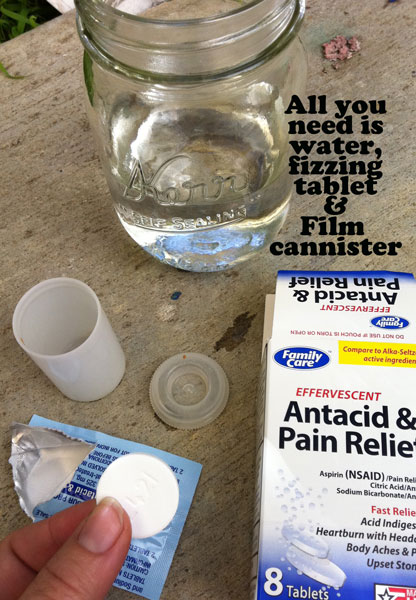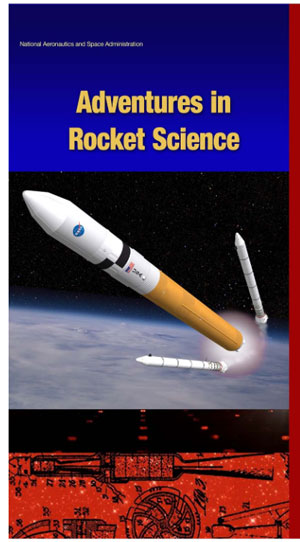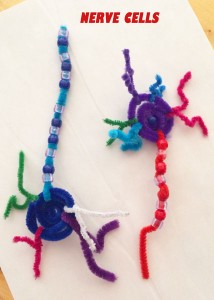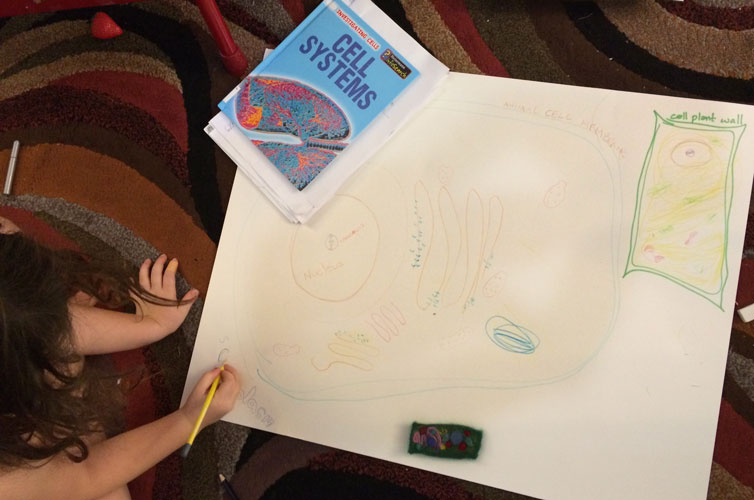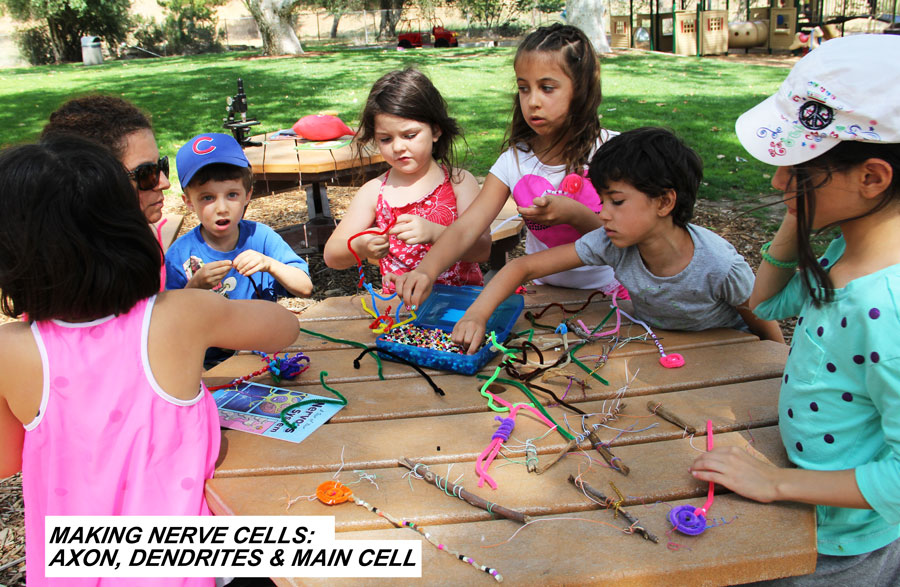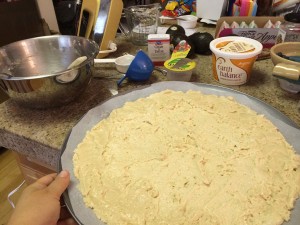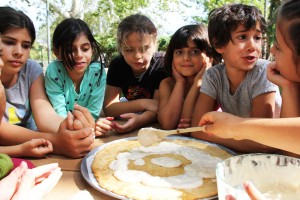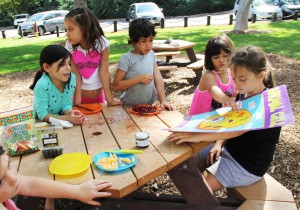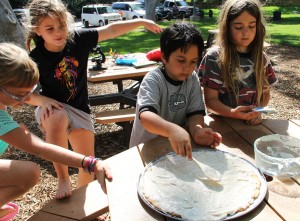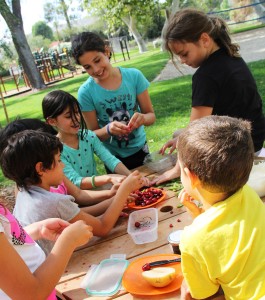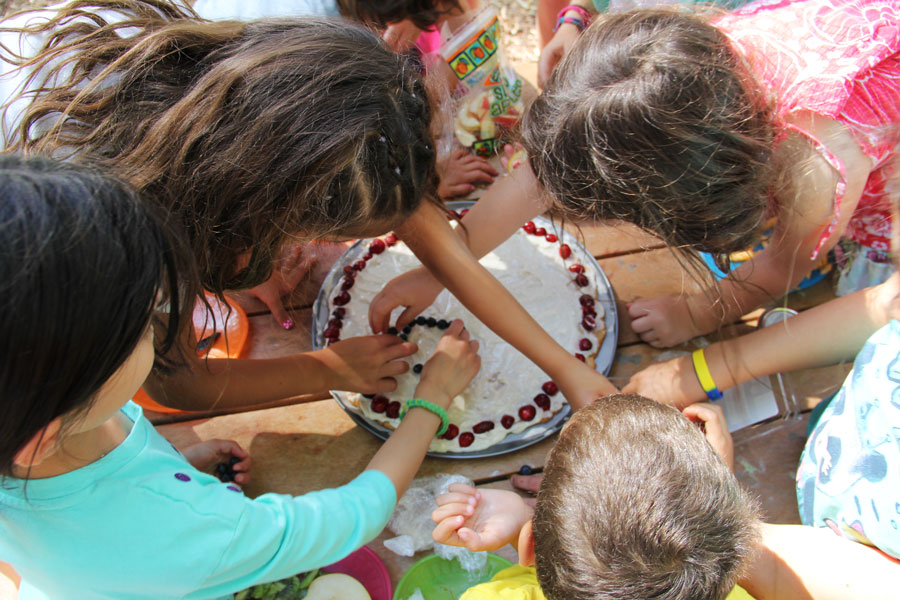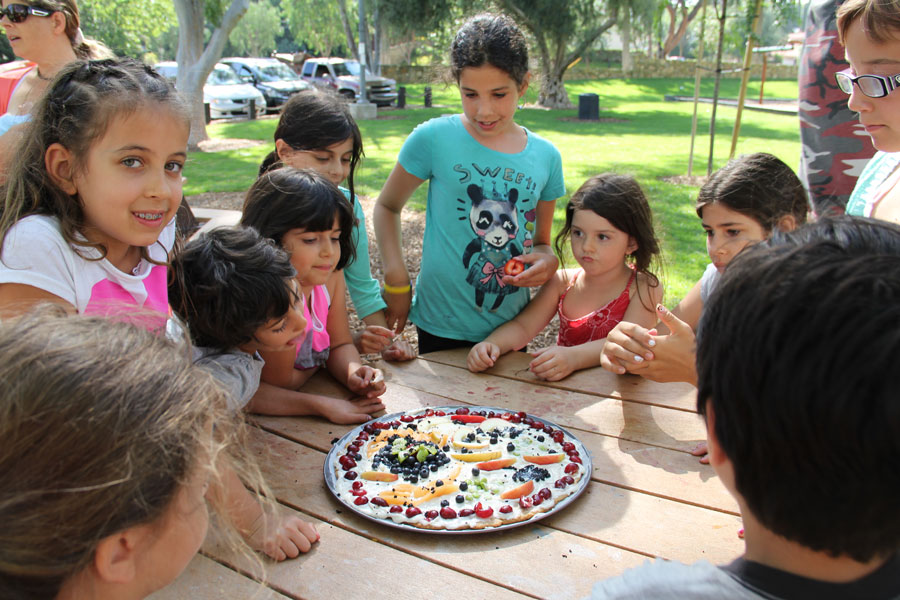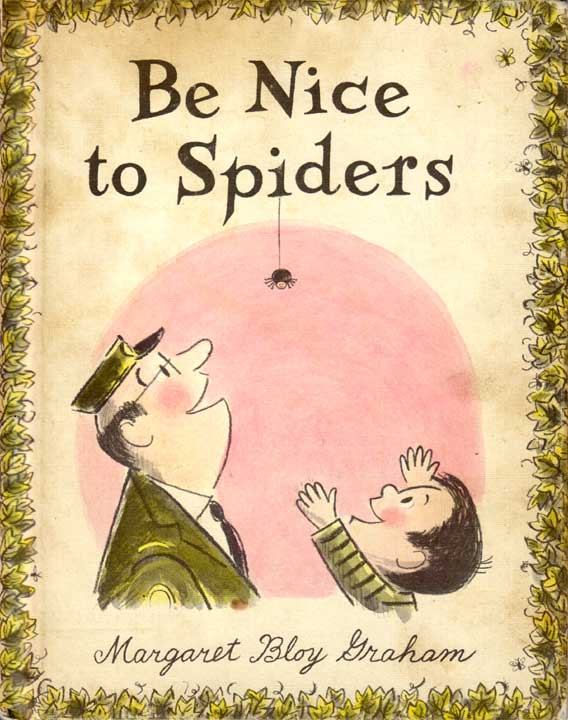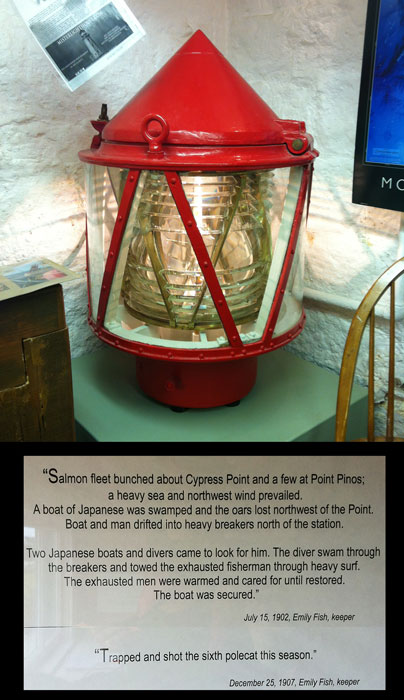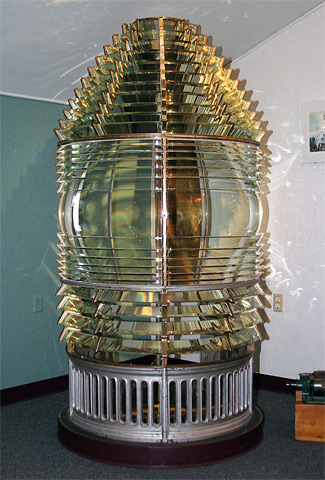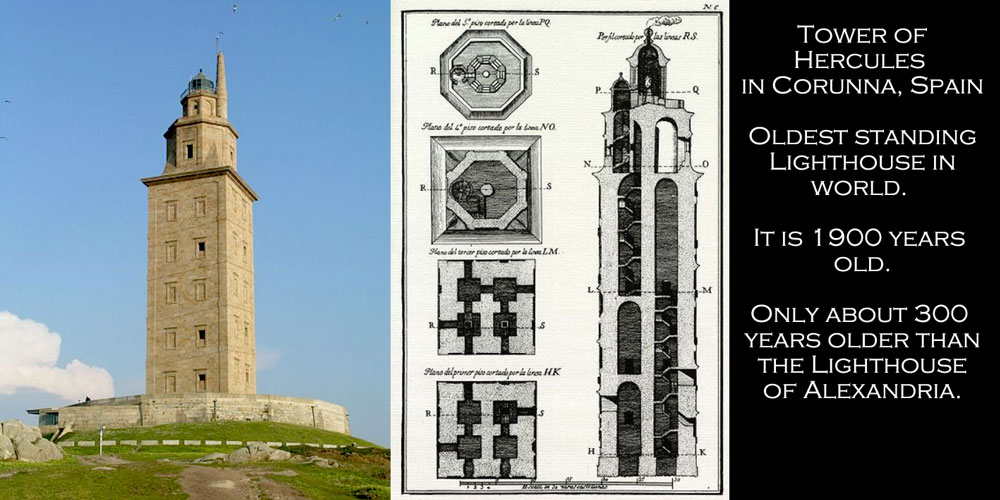 Only a mere 3 hour drive from Los Angeles, Joshua Tree National Park is an amazing way to experience the rich life of the Mojave Desert. April is a great time to see the ground covering flowers, the blossoming pre-historic Joshua Trees, and the dramatic night skies with minimal light pollution. It’s also a great place to Hike, Explore and Bond with your family and fellow homeschooling friends. I’ve been hosting this campout in Joshua Tree since 2009, seven years ago! And this year was one of the best! Take a look at our Magic.
Only a mere 3 hour drive from Los Angeles, Joshua Tree National Park is an amazing way to experience the rich life of the Mojave Desert. April is a great time to see the ground covering flowers, the blossoming pre-historic Joshua Trees, and the dramatic night skies with minimal light pollution. It’s also a great place to Hike, Explore and Bond with your family and fellow homeschooling friends. I’ve been hosting this campout in Joshua Tree since 2009, seven years ago! And this year was one of the best! Take a look at our Magic.
]]>
“Calling all Inventors! Calling all Inventors!” Is there an inventor in your family, a designer or innovative builder? Well this week we will learn about patents to protect your design and brainstorm for the 2015 SPARK Lab Invent It Challenge.
But don’t forget from 11:30am-12:30 is our monthly Potluck. Go ahead and be inventive with your family’s dish too! To keep our carbon footprint low, bring your own dishes, utensils and more.
Now, given that a few inventors of the kids’ boardgames last week had filed for patents, this week we will be learning about Patents. How you can apply, why you should as well as the “poor man’s patent.” Click on the image below for the Kids Section of the US Patent Office website.
Bring anything you own that had a patent. And if you can, go to this link for the US Patent office online and see if you can find the patent number, the date it was assigned and/or print out a photo of the design.
]]>Everyone has a Silly Science Experiment they love. In addition to the Microscope and slides and the Magnet Station I set up, I also had a “Build your own Gak station.” So many kids presented amazing elements of Science. So fun to learn about it all. Here are some of the highlights.
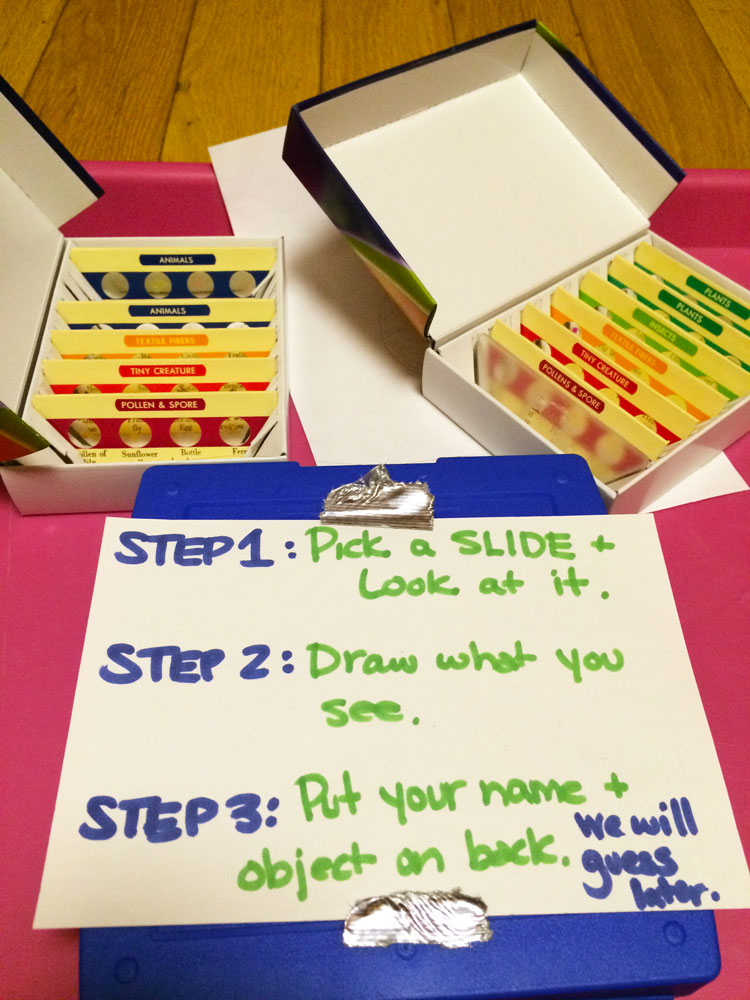
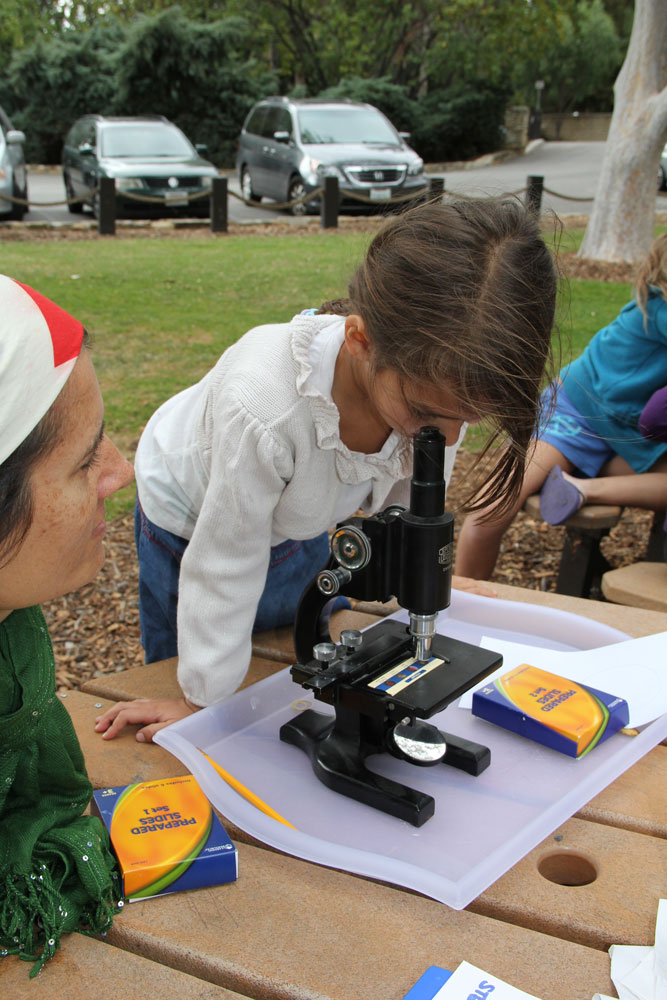 The Deltacs will have some Crazy Cool ones to amaze and make learning about chemistry and physic incredibly memorable.
The Deltacs will have some Crazy Cool ones to amaze and make learning about chemistry and physic incredibly memorable.
As that is the goal, right?
And of course I will have supplies to make GAK – that crazy slimy substance made from Borax and School Glue. Or your could use cornstarch to make OOBleck. Or here is the recipe to make your own silly putty (you need liquid starch).
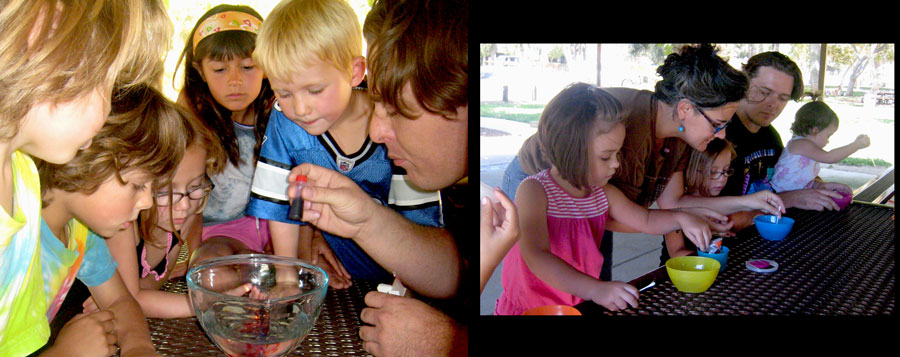
Seeing life under a Microscope counts as impressive science too. I will bring one. Bring something (or collect from park) something to look at under the microscope. Paper and pencils will be provided to sketch what you saw under the microscope.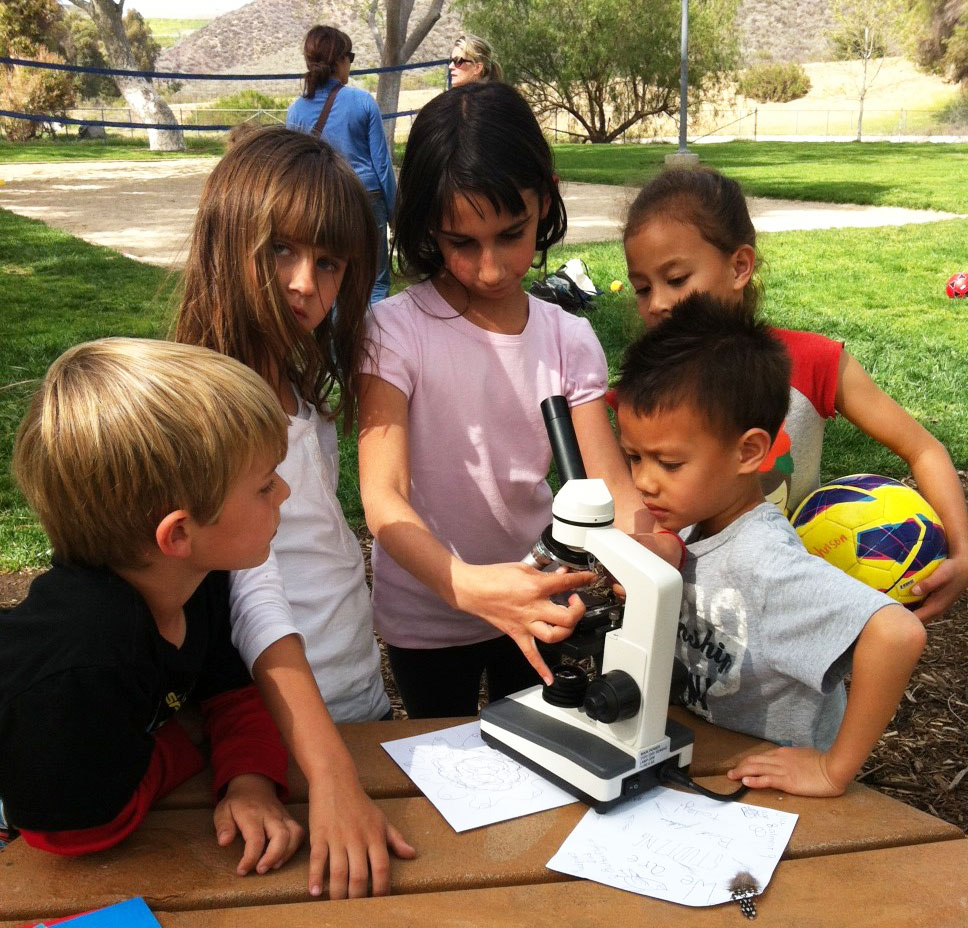
From these great experiments we will learn about atmospheric pressure, construction of comets, exothermic reactions, endothermic reactions, molecular viscosity, subatomic structure, surface tension, meniscus and more.
* Note to Parents: the above scientific terms are just words like LADYBUG, AVALANCHE, and REFRIGERATOR. One day you didn’t know them and the next day you were equipped with a word with alot of syllables to communicate what you saw. Your kids will be learning what they have observed and now have a word for it. Don’t let the fact that we use these words in laboratories, universities and scientific journals prevent your family from enjoying them.
]]>
You can make your own Rocket Launcher from a Soda [...]]]>
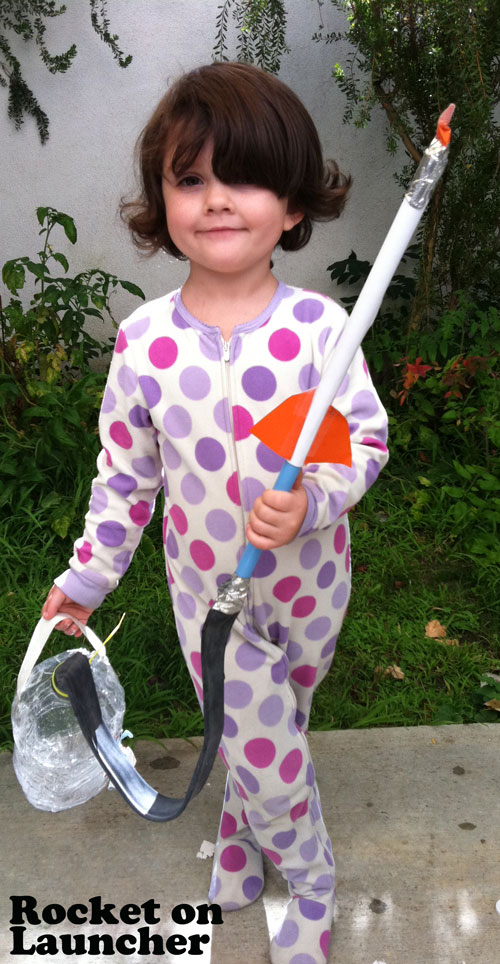
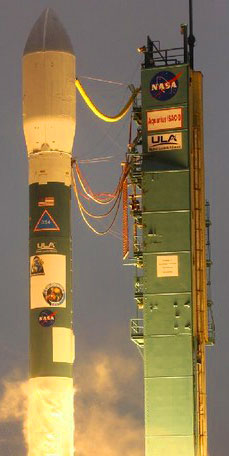 A few weeks back, we took on manned flight within our atmosphere, this week we take flight into OUTER SPACE. We will learn about Rockets, attaining velocity speed, rocket fuel and characteristics of outerspace. Phew, that’s alot to cover. So let’s get to the FUN!
A few weeks back, we took on manned flight within our atmosphere, this week we take flight into OUTER SPACE. We will learn about Rockets, attaining velocity speed, rocket fuel and characteristics of outerspace. Phew, that’s alot to cover. So let’s get to the FUN!
You can make your own Rocket Launcher from a Soda bottle, pvc pipe, an inner tube and duct tape. See image to your left … or spend $12 for a Stomp Rocket at Toys R Us? You know what kind we made at our house!
Bring your Rocket Launcher and let everyone try their hand at making the most efficient and far reaching rockets. We will measure how far each person’s flies.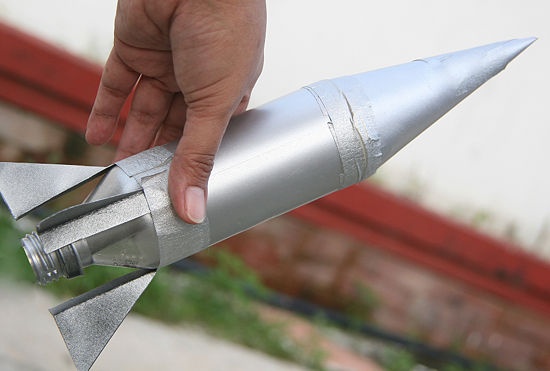
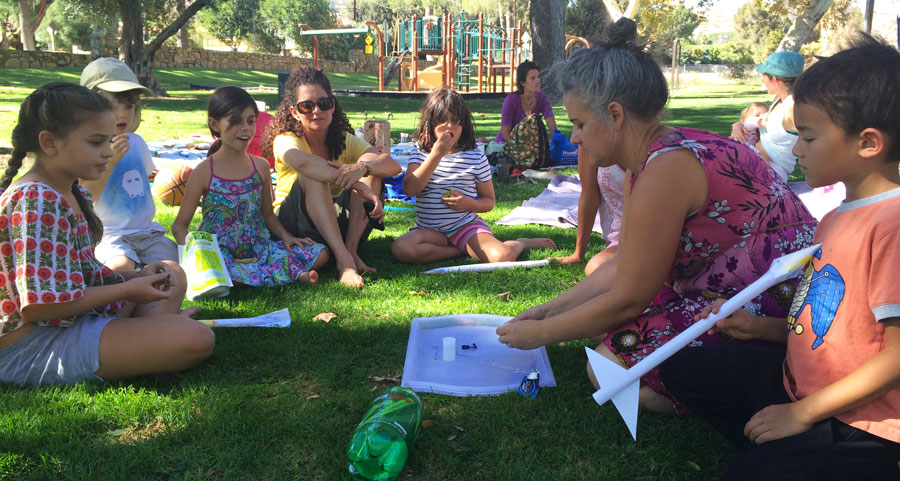
Other rocket launchers we might try at park to illustrate rocket fuel and physics.. Volcano Rocket! I call it a volcano rocket, because it uses the same ingredients: vinegar and baking soda as kid volcano models.
NASA is a great resource for inspiration as well as lessons. Click for NASA’s 25 activity brochure or the Image above.
Look left for another way to understand how rocket fuel needs to release later than launch time is to us a film canister (not so easy to find in the digital film era) and some antacid tablets.
And if you didn’t get enough flight simulation for Helicopters from our last Flight Learnings, here is a great Howtoons on making a copter… 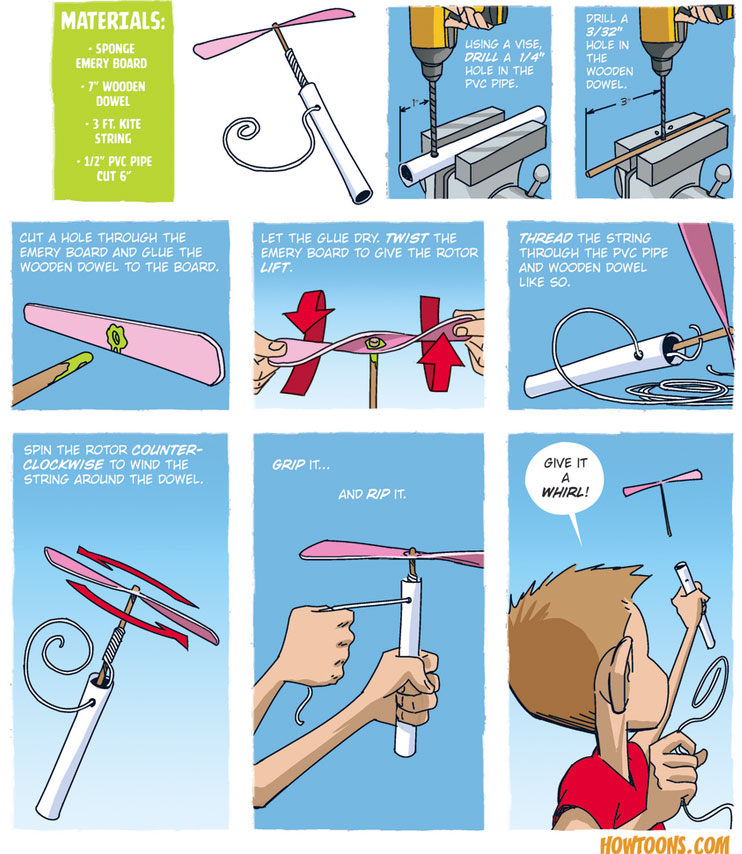
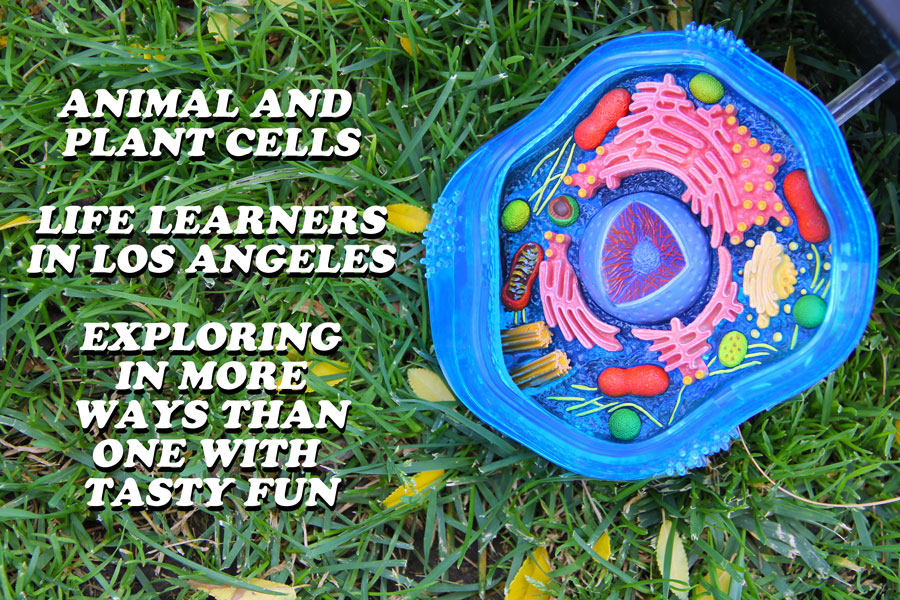
We will Make Cell Models with Beads, Markers, Paper, Yarn or whatever recyclables & craft supplies YOUR FAMILY brings!
Everything that is growing: trees, flowers, animals, bugs are made of cells. Our own bodies are made up of trillions of teeny-tiny cells. Cells are bigger than Atoms, but still too small to see without a microscope. Without our knowledge, they are growing, eating, building, birthing and dying ALL the time! At parkday this week, I will unravel some of the mysteries of these gem-like building blocks. We will discuss the jobs of cell’s organ(elle) have that keep our BODIES functioning. 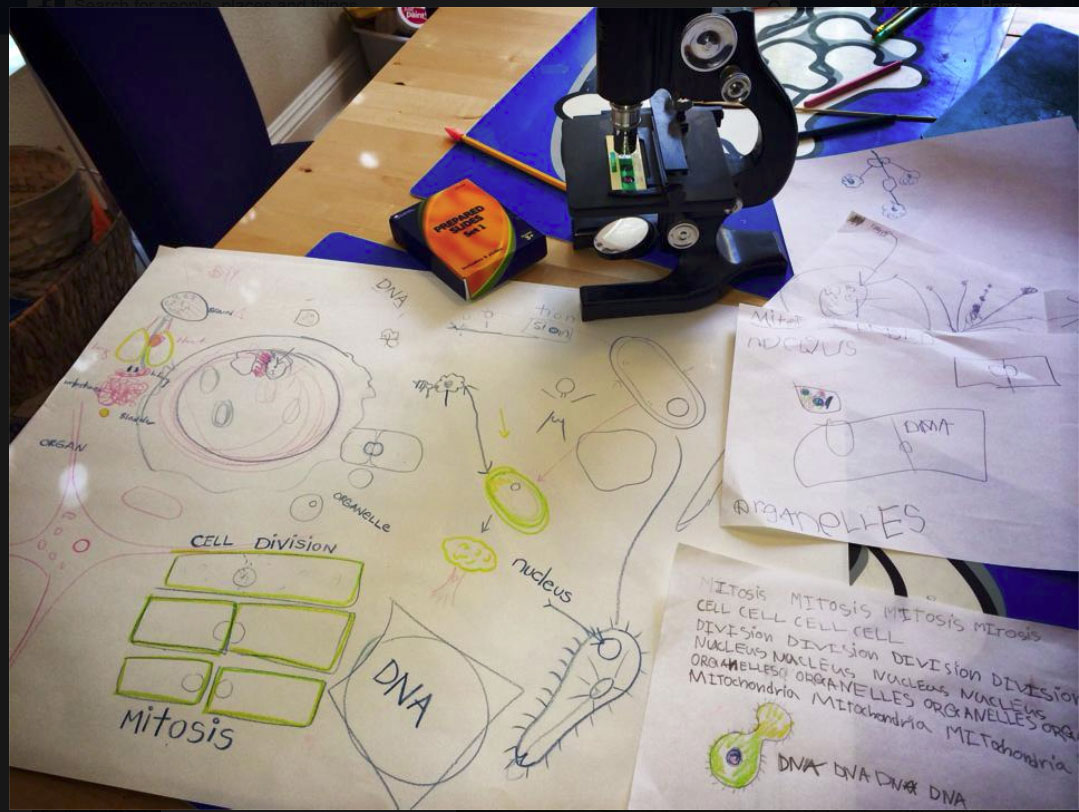 From the book, from LAVA to LIFE, we will learn how our cells evolved from bacteria to become YOU, … over a course of a few hundred million years.
From the book, from LAVA to LIFE, we will learn how our cells evolved from bacteria to become YOU, … over a course of a few hundred million years.
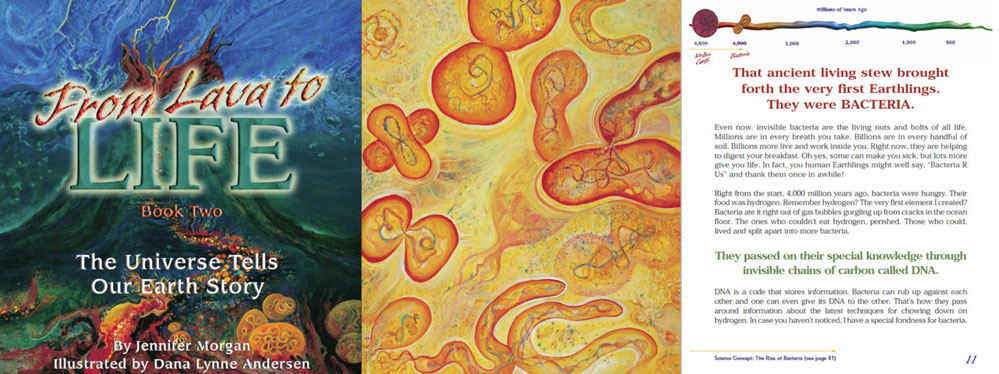

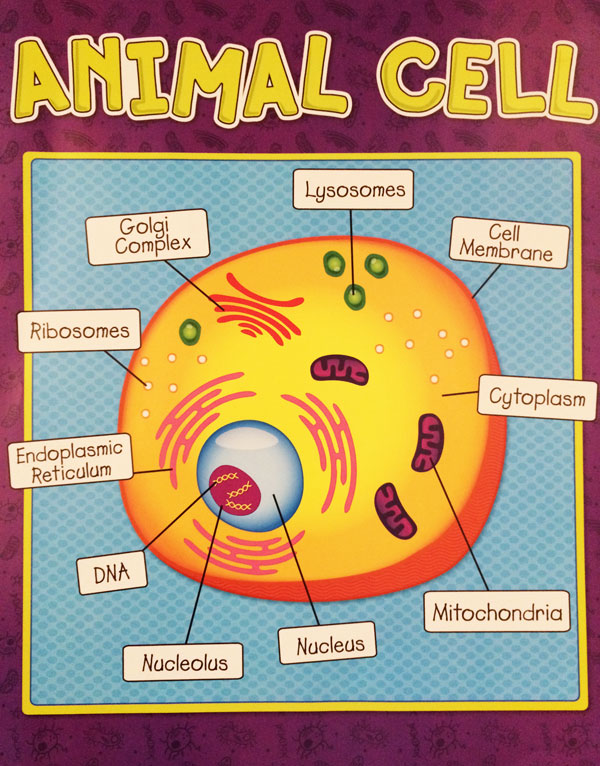 How many cells ARE in your body? 100 trillion!
How many cells ARE in your body? 100 trillion!
Build a Cell Online. Make a Cell Fruit Pizza. Make a REAL Cell Pizza. Or just a Crafty cell.
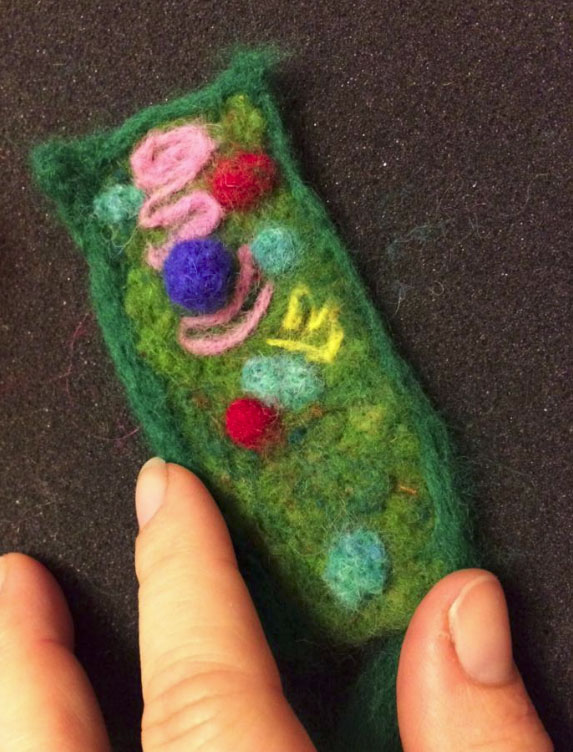

 as unique as the creator. Some of you didn’t get to finish and others only received directions and/or supplies. Please bring your creations back for a show-and-tell. Feel free to jazz ‘em up more too.
as unique as the creator. Some of you didn’t get to finish and others only received directions and/or supplies. Please bring your creations back for a show-and-tell. Feel free to jazz ‘em up more too.
This week we will take on the mechanics behind the other simple machines with a serious emphasis on PULLEYS!!!! 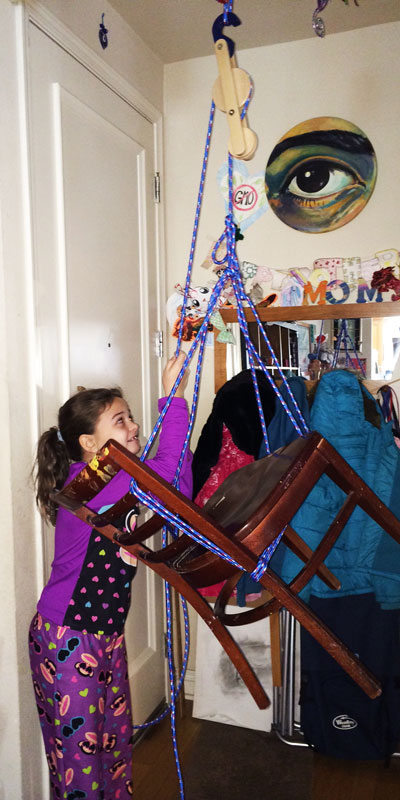 With pulleys, we will see how much
With pulleys, we will see how much weight we can redistribute. Each child will get the chance (more than once I would wager) to put their mental and physical strength to the test.
weight we can redistribute. Each child will get the chance (more than once I would wager) to put their mental and physical strength to the test.
With Pulleys, we will do some block and tackle work to make loads lighter. If anyone wants to get ahead of us all – here is a great Pulley project to do at home!!!
I will bring some pulleys and rope. If you have any rope laying around home or in the garage, please bring it to fill your child’s mind and hands with inspiration while we discuss ideas. Then I will let the kids go to it in making the pulleys work for them. I have four pulleys in my possession at the present, but if you can bring any more, we will definitely put them to good use for the afternoon as well. For more – go to Simple Machines Part 1
]]>UPDATE: BRING A JAR WITH LID (under 8 inches) AND WITH PROVIDED SUPPLIES, TURN IT INTO A BUG CATCHER.
How Amazing are Bugs? They are like little robots – foreign and similar to us at the same time. Join us for a closer look on October 10th from Noon-4pm for a Homeschool Kid Bug Show. Most of these picks were from our 1st Bug Faire from Oct 2011.
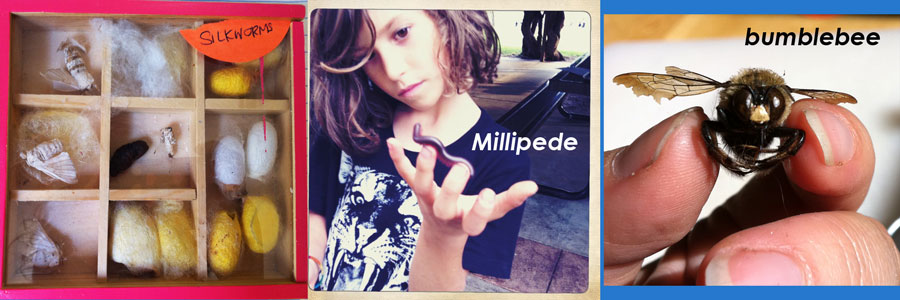
This event is open to non-M&B Members as well as M&B.
- Bring bugs, spiders, and habitats to show off to friends (alive or dead)
- Write a poem about bugs to be displayed with others at park
- Games like Bug Dice and Honey Hive will be available to play
- Blanket time about bug body parts including crazy cool Compound Eyes
- Bug storytelling and books for those interested
Email jessica(at)jessicadeltac(dot)com to reserve space to set up your bugs (dead or alive). Come early to set up. There will be a DO NOT TOUCH rule if the owner is not present, but you can bring a sheet to cover up your exhibits if you choose.
And with over 1 million species of insects on this planet and only 5,540 species of mammals- Insects truly rule the world. Let’s ake it one step further… Most insects contain little fat, lots of protein as well as iron & calcium, so entomophagy is most likely going to be a part of our future as it is in many parts of the globe. Yes, that means dining ON bugs! 
Some Bugs have many eyes. Bugs like caterpillars and spiders have simple eyes that are similar to our own. Most other bugs like dragonflies and bees have compound eyes, with hundreds of lenses (ommatidia) in each eye. Some have both. I made a giant compound eye to help kids (& parents) better understand this unique adaptation.
Click here to see how a Bee sees the world through their compound eyes!

Insects on Display
In the past, kids have brought beetles, grasshoppers, cicadas, ladybugs, praying mantis, walking stick bugs, a millipede, spiders, bumble bees, honeybees, dragonflies and more - living and preserved.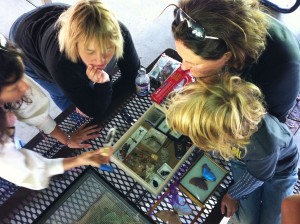

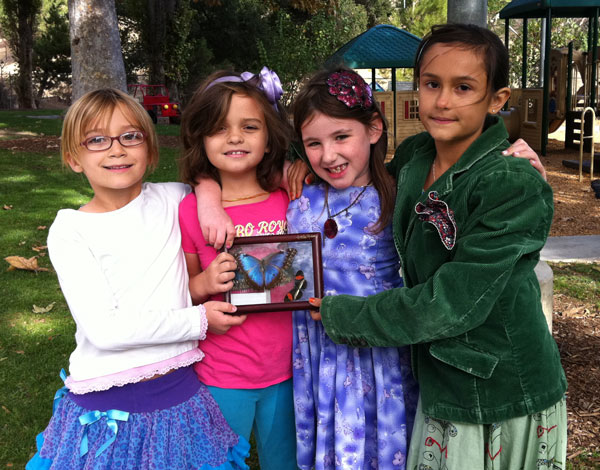
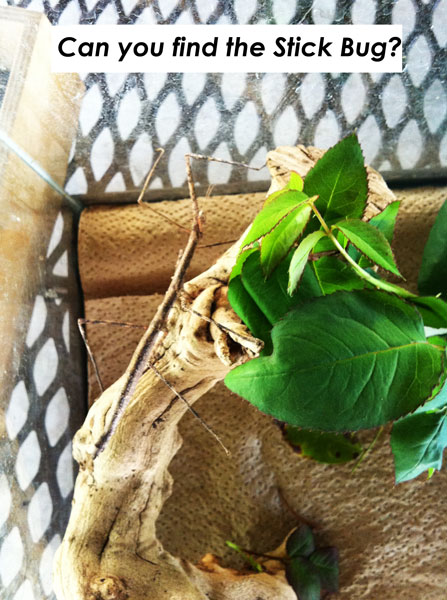
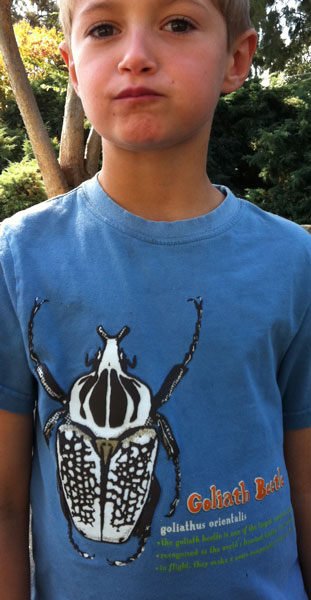 ………Bug Riddles & Poems (click here for more)
………Bug Riddles & Poems (click here for more)
1. I’m not your sister or your mother,
But I’m married to your father’s brother.
2. In spring when we bugs are little,
We live in gobs of frothy spittle.
Later on we leave this home,
And are adults free to roam.
And as adults fully grown,
Froghopper is the name by which we’re known.
Kids are invited to make up their own poems. Here are some that were on display. (Parents are welcome to write them down)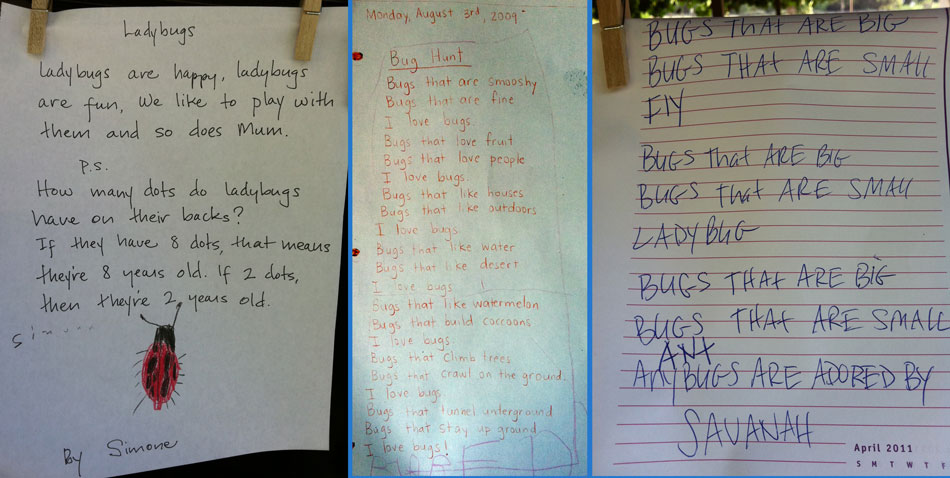
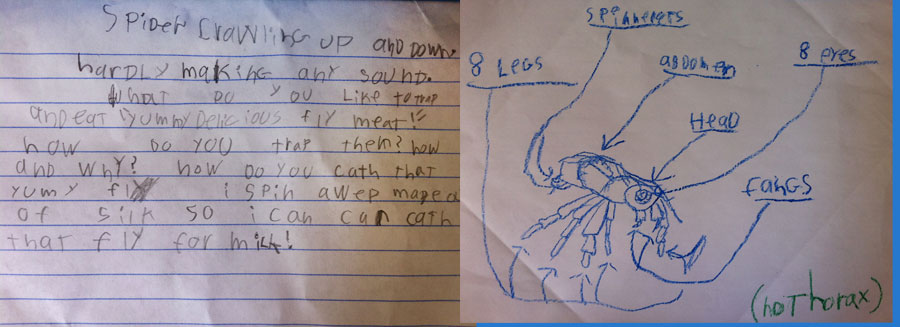
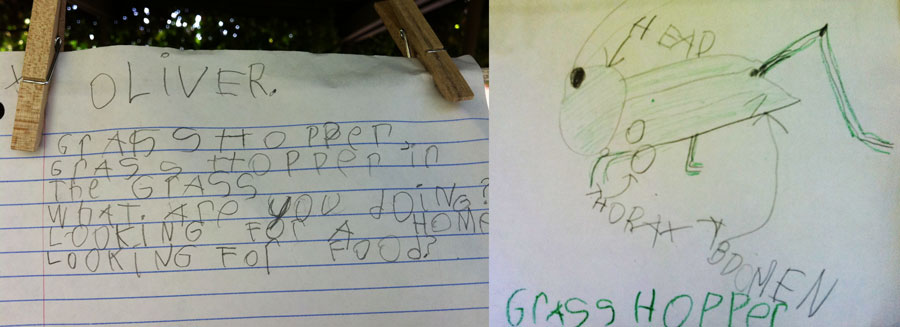
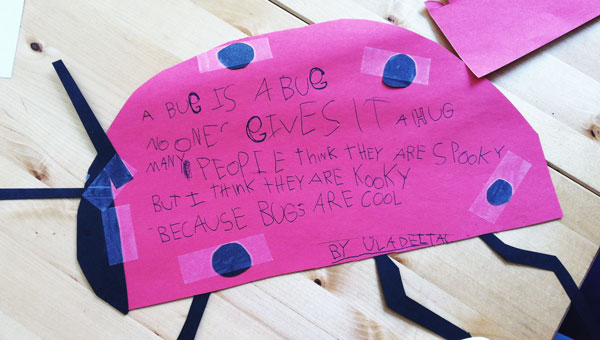
In addition to browsing and reading the kid’s original poems and bug riddles, I read Be Nice to Spiders (yes, spiders are not insects, but arachnids) and brought I’m a Pill Bug.
GAMES – Bug Dice
Supplies: Four kids get a photocopy of four different insect, a bunch of crayons and one dice
How to Play: Each child takes turn rolling the dice. Depending on their roll, they color in the part of their insect that correlates with the number on the dice. Remember – You don’t have to wait until each person colors their part to roll. As soon as the last person rolls, the next can roll. This prevents players from waiting more than rolling and coloring.
1 = head 2 = thorax 3 = wings (2 pairs) 4 = legs (3 pairs) 5 = abdomen 6 = antennae (1 pair)The first ones to color in their entire insect cheer on the rest until the last insect is colored!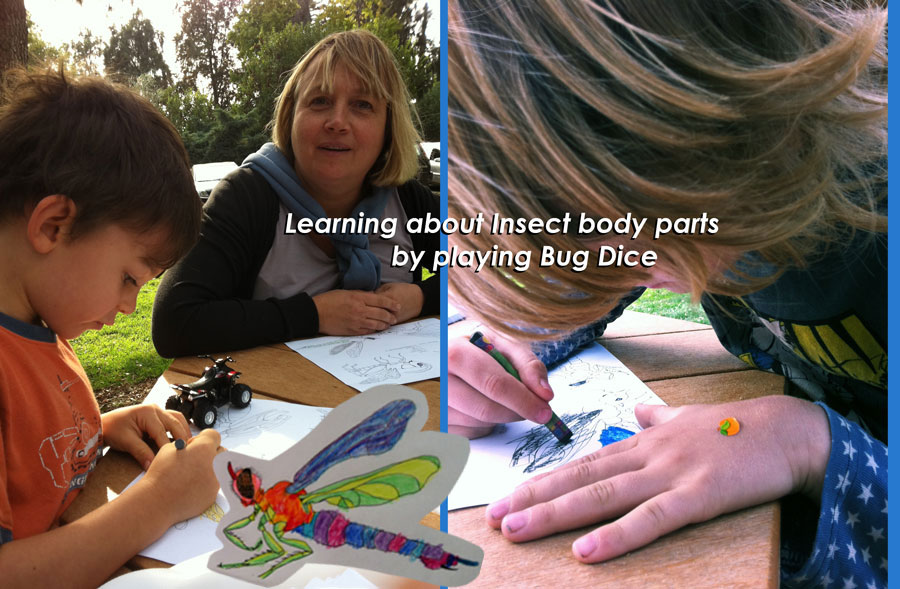

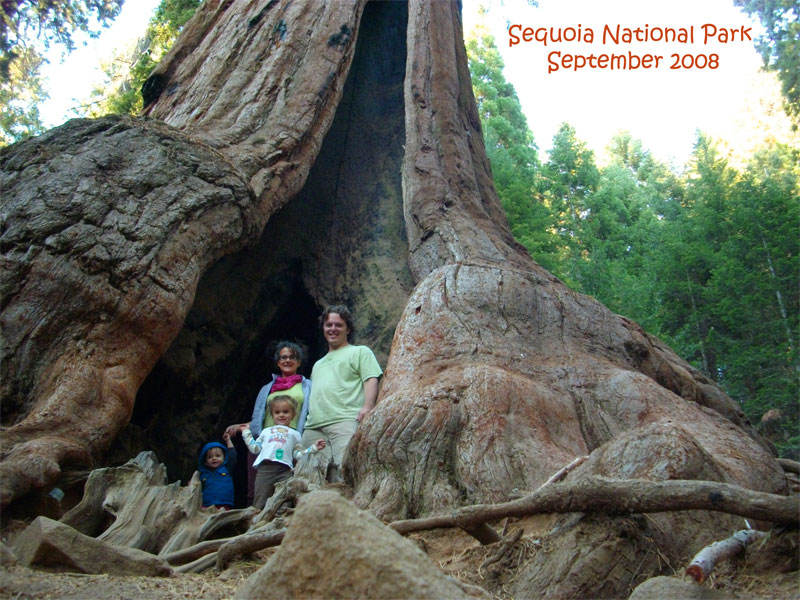
We learn so much from the Rangers’ talks on the history of the park, but most captivating is their talks on the wildlife. In the past years we have come upon much of the park’s wildlife on our own: marmots, mule deer, brown bears (and cubs), chickarees (golden mantled squirrels), pikas, CA jays, flying squirrels, bighorn sheep, 17 species of bats, black-footed ferrets and more.
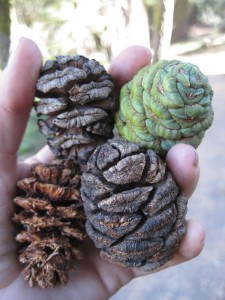
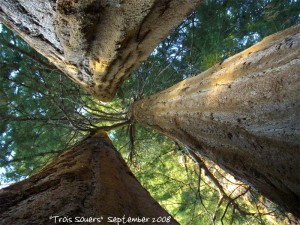
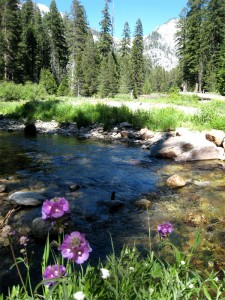 The story of the Sequoia Trees and how they need fire to survive is incredibly captivating as it is unraveled in interactive exhibits in the quaint Giant Forest Museum. And there is wonderful history in this park to share stories out and about as well as at our infamous Saturday Night Talent Show run by the kids. We go to the Wuksachi lodge for more than Wi-fi; twice a week they host brilliant celestial sky-walks. There are two caves worth taking tours, the closer Crystal Caves and the Boyden caves near a thrashing river in upper elevations of King’s Canyon.
The story of the Sequoia Trees and how they need fire to survive is incredibly captivating as it is unraveled in interactive exhibits in the quaint Giant Forest Museum. And there is wonderful history in this park to share stories out and about as well as at our infamous Saturday Night Talent Show run by the kids. We go to the Wuksachi lodge for more than Wi-fi; twice a week they host brilliant celestial sky-walks. There are two caves worth taking tours, the closer Crystal Caves and the Boyden caves near a thrashing river in upper elevations of King’s Canyon.
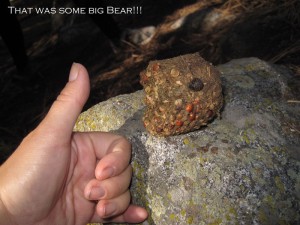

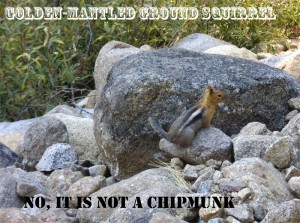 And we camp above 6,000 elevation – where poison oak doesn’t survive, so all the rock scrambling to the top of anything as well as off trail hiking can occurs much more freely. Because as I believe in my heart, exploration is key to discovering about what your body can and can’t do. Such a big part of human development that is hampered by living in a world that constantly minimizes the risk in childrens’ lives.
And we camp above 6,000 elevation – where poison oak doesn’t survive, so all the rock scrambling to the top of anything as well as off trail hiking can occurs much more freely. Because as I believe in my heart, exploration is key to discovering about what your body can and can’t do. Such a big part of human development that is hampered by living in a world that constantly minimizes the risk in childrens’ lives.
Pictures from 2013 to come upon our return. But until then, I’ll leave you with a few.
]]>Yeah! It is going to be cool enough to meet at our Breezy park again. Just in case, check this webpage Thursday at 9am. Otherwise, I look forward to meeting you at 1:00pm.
A few weeks back we only [...]]]>

A lamp and polished discs used in a Lighthouse in America before 1842.
 Yeah! It is going to be cool enough to meet at our Breezy park again. Just in case, check this webpage Thursday at 9am. Otherwise, I look forward to meeting you at 1:00pm.
Yeah! It is going to be cool enough to meet at our Breezy park again. Just in case, check this webpage Thursday at 9am. Otherwise, I look forward to meeting you at 1:00pm.
A few weeks back we only did half of the Lighthouse Fun before we all jumped into the pool. Didn’t 105 feel like we were on the Light side of the Moon?
So I never go to Part II on Prisms, Light and Lenses. This week we will recreate Isaac Newton’s simple experiment that proved sunlight was made up of a rainbow of colors. Until then, they thought it was only a trick of a prism.

And anyone who didn’t get to build a lighthouse, bring an empty cereal box (or poster-board) and a pair of scissors and you can make and decorate the lighthouse of your dreams. Thx Yvet, who donated battery-operated tea lights.
Before they brought lenses into the Lantern Rooms, they used lamps and polished discs as reflectors. But that only focused light 17% , versus 85% with prisms.
There is still space to join the Deltacs this Saturday to our closest working Lighthouse in Palos Verdes and picnic at some of the best tidepools in SoCal. It is $5 per family and includes a companion curriculum, a tour up to the top of the Lighthouse (which is ONLY open the 2nd Saturday of the month) as well as info on the Abalone Cove tidepools and the Hidden caves near the Lighthouse. But even if you can’t come this Saturday, the companion curriculum will allow you to go at your own pace at any other time. Go to paypal and donate $5 and the fee to my account jessica@jessicaran.com – and in the message put “Lighthouse Fieldtrip“; the ages of your children and an email I can send the PDF of the curriculum which includes a scavenger hunt, crafts, recommended booklist, brief history of lighthouses, physics of light and prisms, and Why is the Sky Blue?
* And just a reminder – September 19, MudPies & Butterflies will not be meeting. Because half of us will be in Sequoia National Park for our Annual Family Campout. If you have a reservation and want to cancel, please check with me as I have a few families interested. And if you want to go and don’t have a reservation, get in touch with me.
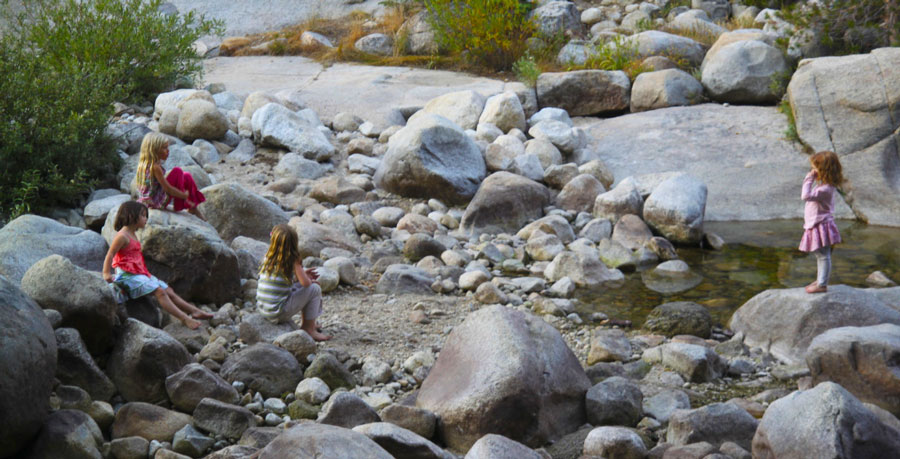
This is our Fabulous Backyard - The Keawah River, at Sequoia & King's Canyon National Park
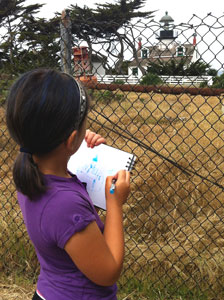 Due to the heat, we are meeting at Calabasas Tennis & Swim Club 23400 Park Sorrento Calabasas, CA 91302 @ 11:30 am. Bring your lunch for a group “Lighthouse Learning & Crafts” picnic in the playground next to the pool. Crafts and lesson will start @ Noon and we will swim right after. Parking is Free and admission is nominal: kids – $1 and adults – $3.
Due to the heat, we are meeting at Calabasas Tennis & Swim Club 23400 Park Sorrento Calabasas, CA 91302 @ 11:30 am. Bring your lunch for a group “Lighthouse Learning & Crafts” picnic in the playground next to the pool. Crafts and lesson will start @ Noon and we will swim right after. Parking is Free and admission is nominal: kids – $1 and adults – $3.We will learn about the evolution of the mechanics of the modern Lighthouse, fascinating stories of LightHouse keepers, and bring THREE items for the craft, Make your own Lighthouse: please BRING a Cereal box and scissors (tape, art supplies & battery lights are being provided). Littler kids can make a simpler Lighthouse with just cups and tape. 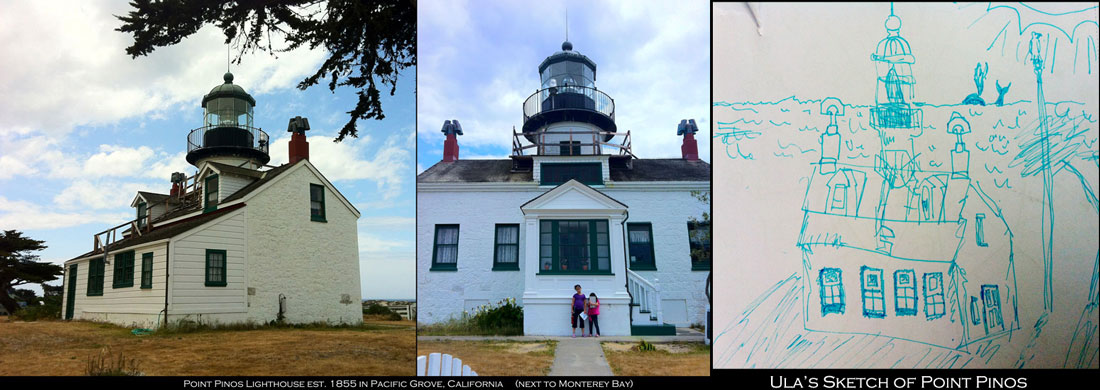
Join us Sept 14th @ 10 am for a tour of Point Vincente Lighthouse in Palos Verdes followed by a group picnic at the end of Bluff Top Trail near the Hidden Terranea Beach Cave .
Lighthouse keepers were a strange breed who preferred isolation to town and the demanding tasks required in all types of weather. I will share the some fabulous Lighthouse stories, including that of Emily Fish, “Socialite Keeper,” who commanded a post at the Pinos Lighthouse in Pacific Grove, CA from 1893-1915.
If you were the daughter or wife of a Lighthouse Keeper, you had a good chance of taking over the occupation, in a day and age where women could either be mother, teacher or nurse. And some lighthouse keepers were all four. Ida Lewis gained her reputation for being “The Bravest Woman in America,” for her daring rescues of crashed sailors and others near her post at Lime Rock Lighthouse in Newport, RI.
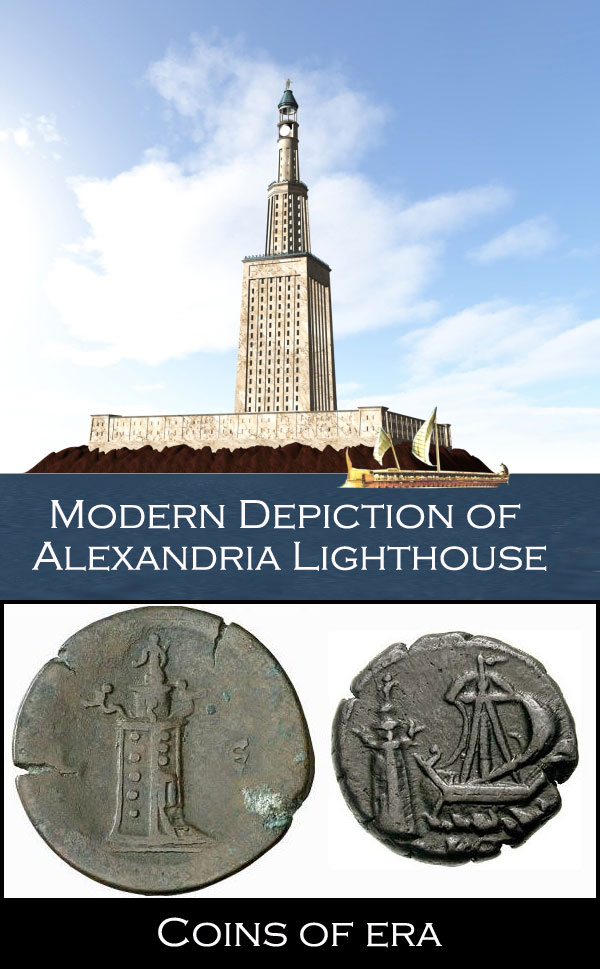
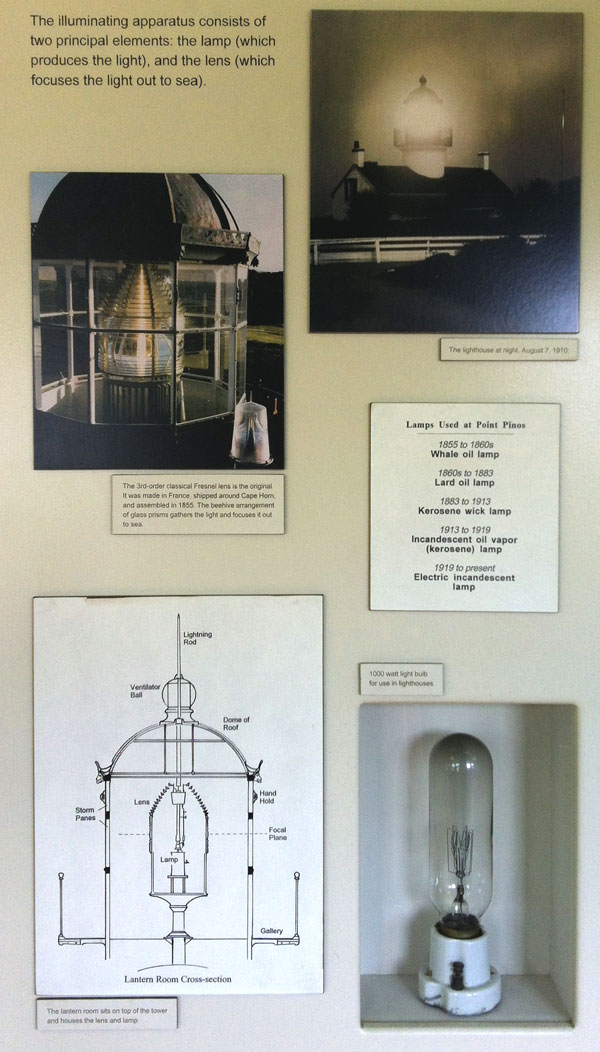 Lighthouses offer up almost as much intrigue, as Pirate ships. This week, learn about the evolution of lighthouses and their mechanics as well as how their purpose has changed over the years. By 1990, all Lighthouses were automated, except for the one in Boston Harbor. It will forever remain manned in order to honor the lives and dedication of all lighthouse keepers of the past.
Lighthouses offer up almost as much intrigue, as Pirate ships. This week, learn about the evolution of lighthouses and their mechanics as well as how their purpose has changed over the years. By 1990, all Lighthouses were automated, except for the one in Boston Harbor. It will forever remain manned in order to honor the lives and dedication of all lighthouse keepers of the past.
And if you really like Lighthouses, for $101,000 you can purchase the Graves Island Lighthouse to live in.
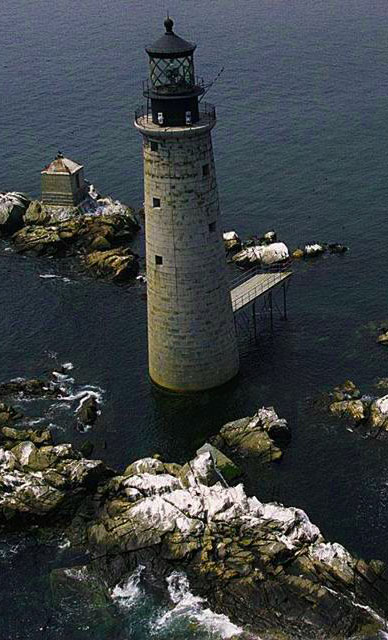
For $101,000 your family could live here!
The lighthouse lens was invented using prisms. Prisms bend the light making it visible for many miles.
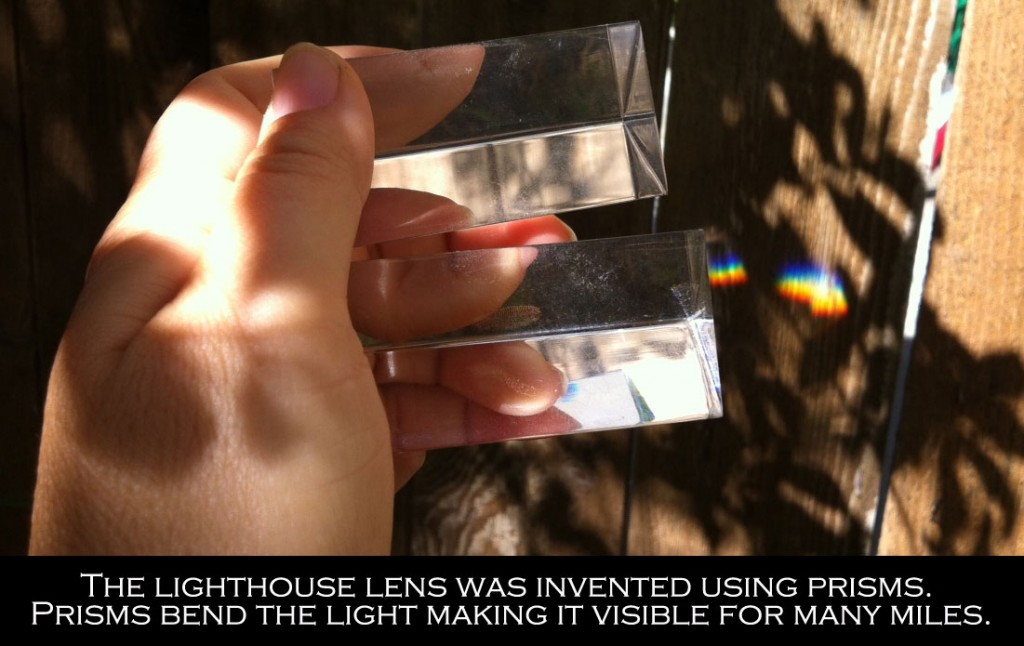 Sometimes, however, you cannot see the light due to fog or bad weather, and because of that lighthouses have bells or other things that make noise to warn ships under such conditions. Some lighthouses use sealed-beam lamps Sealed-beam lamps swing around like a search light. It can be seen many times if the light is rotating fast. These lamps can be shown through rain, fog, and snow.
Sometimes, however, you cannot see the light due to fog or bad weather, and because of that lighthouses have bells or other things that make noise to warn ships under such conditions. Some lighthouses use sealed-beam lamps Sealed-beam lamps swing around like a search light. It can be seen many times if the light is rotating fast. These lamps can be shown through rain, fog, and snow.
